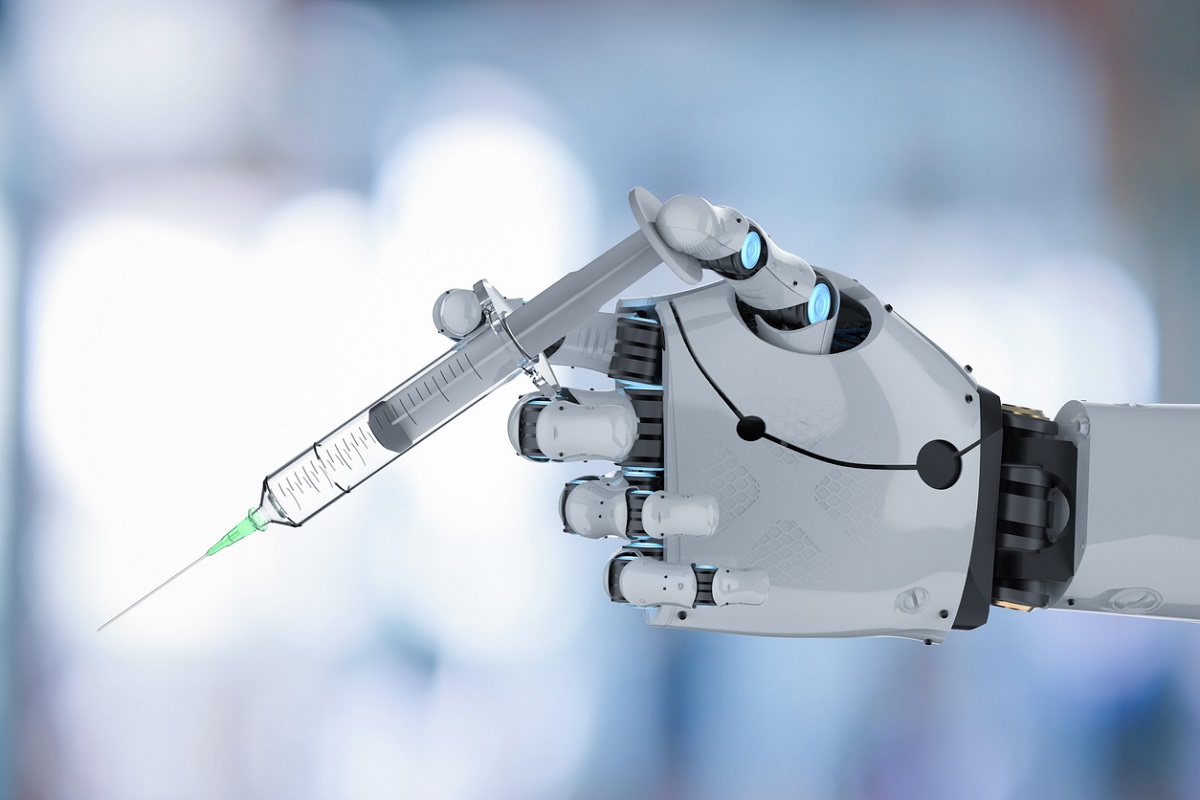The 2002 Spielberg movie ‘Minority Report’, set in 2054, portrayed a bespoke eye surgery robot controlled by a backstreet surgeon using visualisation technology.
Double eye transplant was performed on the hero John Anderton. Well, is that too much to imagine? Possibly not. Let’s take a sensational recent example. In a pathbreaking development last December, leading Ahmedabad-based cardiologist Tejas Patel, a Padma Shri awardee, performed the world’s first in-human telerobotic coronary intervention on a patient nearly 32 km away, using CorPath GRX, a vascular robotic system.
Advertisement
Artificial Intelligence (AI) is breaking barriers in different aspects of life. An IBM computer ‘Deep Blue’ beat world chess champion Garry Kasparov in 1997; ‘Watson’ beat human competitors in Jeopardy in 2011 and ‘Alpha Go’ beat Lee Sedol in the South Asian strategy game ‘Go’ in 2016. And human health cannot be beyond the purview of challenging and supplementing human intellect.
In remote procedures like telerobotic surgery, medical expertise is blended with AI, robotics, big data analytics, high-speed data connections, elements of management information systems and imagination, and can use the expertise of specialised surgeons to be available to patients worldwide, without travelling. In an attempt to overcome the inherent limitations of laparoscopic surgery, in the early 1990s, Stanford Research Institute carried out research to develop a ‘master-slave telemanipulator’ – a system wherein a computer and robotic instrumentation intervened between the surgeon and the patient.
The first successful telerobotic procedure on a human was performed in 1995 in Italy for a prostate biopsy to a patient 5 km away via a robotic telemanipulator. However, the world had to wait six more years for a true long-distance fully controlled remote surgery supplemented by high speed, high bandwidth communications and adequate computational power.
On 7 September 2001, a French surgeon in New York City performed a cholecystectomy, the first complete remote surgery, on a 68-year-old female patient 6,230 km away in Strasbourg, France – known as ‘Operation Lindbergh’ after Charles Lindbergh’s pioneering transatlantic flight from New York to Paris.
And the era of telerobotic surgeries began. Meanwhile, in 2000, the US Food and Drug Administration cleared the da Vinci Surgical System for human use, in which the surgeon manipulates joysticks in a master console using 3D imaging for guidance; the robotic arms mimic the surgeon’s movements on the patient’s side.
The system costs $1.5 million; while Zeus, the newer telesurgery system, is slightly cheaper. What about precision in this kind of surgery? Several studies confirmed better accuracy of telerobotic surgeries than the traditional approaches, e.g. CorPath GRX’s robotic stenting used in the recent Gujarat telerobotic surgery provides accuracy of sub-1 mm, against a surgeon’s 5-10 mm.
The chance of technological and communication malfunction in telerobotic surgery is proved to be very little, and the lag time – as it is performed from a faraway location – is not serious at all. Telerobotic surgeries might soon make expensive, complicated surgeries much more widely accessible to patients of different corners of the globe. In fact, robots could be performing a third of US surgeries by 2021.
The US Department of Defense wants to have a Trauma Pod by 2025, which would allow surgeons to perform operations on soldiers from a distance. And, in future, remote surgery might be used during long space exploration missions as well. However, the traditional patientsurgeon relationship needs to be redefined within the new framework of patient-robot-surgeon chain.
How comfortable will it be to get your surgery done by a robot when you’d never get a chance to meet the surgeon face to face? Who will be accountable for the outcome? Joint treatment by human surgeons and robots would invariably raise new regulatory, ethical and legal questions – medical licensing over international borders being mostly unclear.
With the advance of technology, AI, big data analytics, deep learning and iterative practice, would autonomous robots replace human surgeons in future? Well, in the 2013 Hollywood movie ‘Prometheus’, the Alien prequel featured a surgical robot performing major operations without human control. At present, with fuzzy logic, neural networks and intuitive computing still in their infancy, autonomous surgical robots may be a feature of the distant future.
Experts even think that robots replacing master surgeons in the near future seem as improbable as Google self-driving in Formula One. However, as the machines are becoming increasingly autonomous, the conventional master-slave relationship between surgeon and robot could change over time. Isaac Asimov framed ‘Three Rules of Robotics’ in his fictional short story ‘Runaround’ (1942), which is treated as a preliminary ethical framework to develop autonomous or semi-autonomous robots.
The First two Rules are: “a robot may not injure a human being, or, through inaction, allow a human being to come to harm”; and “a robot must obey the orders given it by human beings except where such orders would conflict with the First Law”.
Now, a serious conflict would arise if any semi-autonomous robot assisting surgeons thinks the next operative step harmful to the patient! What would happen in such dystopian situations? In any case, many of us will have to choose between fully human surgeon operated and telerobotic surgeries within our lifetime. How easy will it be to take a call?
And what about a robot-controlled double eye transplant as illustrated in the movie ‘Minority Report’, even before the year 2054? At the moment, the job for creators of science fiction is becoming increasingly difficult – nothing seems impossible in the near future.
(The writer is Professor of Statistics, Indian Statistical Institute, Kolkata)











